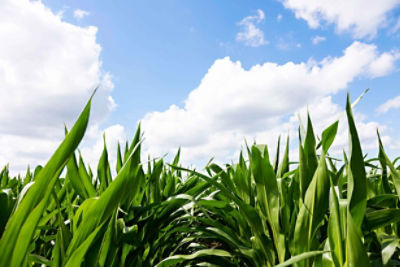High Humidity Can Disrupt Pollen Shed in Corn

Crop Focus
Written by Mark Jeschke, Ph.D., Pioneer Agronomy Manager
Crop Focus
Written by Mark Jeschke, Ph.D., Pioneer Agronomy Manager
Figure 5. Hourly relative humidity and precipitation for four locations from July 1 to July 20, 2023. Days shaded in gray or those where pollen shed could potentially have been reduced by rainy conditions or high humidity (>70%). Data from NOAA NCEI U.S. Climate Reference Network monitoring stations.




The best genetics, top trait packages and extensive local field knowledge combine to deliver new products with proven performance consistency across years and environments. Use Pioneer® brand corn products to maximize yield potential on every acre.
Find Local ProductsAylor, D.E., N.P. Schultes, and E.J. Shields. 2003. An aerobiological framework for assessing cross-pollination in maize. Agric. For. Meteorol. 119:111-129. Bonner, L.J. and H.G. Dickinson. 1990. Anther dehiscence in Lycopersicon esculentum. II. Water relations. New Phytol. 115:367-375. Heslop-Harrison, J.S., Y. Heslop-Harrison, and B.J. Reger. 1987. Anther filament extension in Lilium: potassium ion movement and some anatomical features. Ann. Bot-London 59:505-515. Jackson, S.T., and M.E. Lyford. 1999. Pollen dispersal models in quaternary plant ecology: assumptions, parameters and prescriptions. Bot. Rev. 65:39-75. Jarosz, N., B. Loubet, B. Durand, X. Foueillassar, and L. Huber. 2005. Variations in maize pollen emission and deposition in relation to microclimate. Environ. Sci. Technol. 39:4377-4384. Nielsen, R. 2018. Tassel Emergence & Pollen Shed. Purdue University Extension Entomology, Pest & Crop Newsletter. Strachan, S. 2022. Timing of pollen shed in corn. Pioneer Agronomy Research Update. Vol. 12, No. 11. Corteva Agriscience. Johnston, IA. van Hout, R., M. Chamecki, G. Brush, J. Katz, and M.B. Parlange. 2008. The influence of local meteorological conditions on the circadian rhythm of corn (Zea mays L.) pollen emission. Agric. For. Meteorol. 148:1078-1092.
The foregoing is provided for informational use only. Please contact your Pioneer sales professional for information and suggestions specific to your operation. Product performance is variable and depends on many factors such as moisture and heat stress, soil type, management practices and environmental stress as well as disease and pest pressures. Individual results may vary. Pioneer® brand products are provided subject to the terms and conditions of purchase which are part of the labeling and purchase documents.
